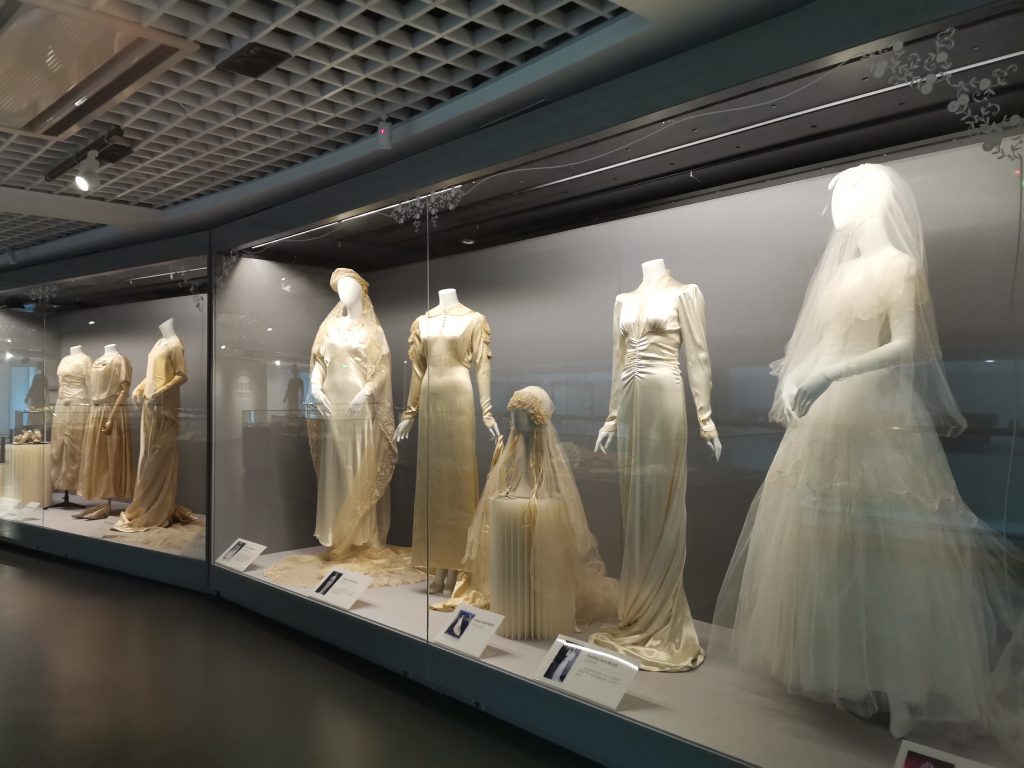Romance & Purity: Western Wedding Dresses in the 19th-20th Centuries
No matter how much the fashion industry evolves, white always dominates wedding dresses, a tradition that began when Queen Victoria’s wedding dress made white gowns prevalent in the mid-19th century.
Forty vintage wedding gowns from the 19th century to the 1950s are on display at the China National Silk Museum through March 14.
Prior to Queen Victoria’s time, Western nobility favored silvery wedding dresses, and middle-class women preferred colorful silk gowns.
These luxury dresses have faded into a beige-like color, but their quality tells visitors they were once exclusive to the upper class.
From the 1860s to the 1920s, corsets were used in wedding dresses to accentuate or even exaggerate the curves of a woman’s upper body.
One of the exhibit’s wedding gowns was designed in the shape of an hourglass, reflecting the aesthetics of the time. During this period, people used pearls, as well as golden an d silvery embroidered patterns, to decorate dresses, which gradually gained popularity in the West.
As the fashion industry developed, looms made it possible to produce lace in large quantities, an d lace-decorated dresses were common at the beginning of the 20th century.
A breakthrough in the fashion industry took place in the 1920s when Coco Chanel designed a range of glamorous haute couture in black and white.
Fashion designers removed traditional corsets an d bustles from wedding dresses, creating a new style that highlighted the waistline.
Some wedding gowns were revolutionary, characterized by a small, nipped-in waist an d full skirt extending below the ankles, which emphasized women’s busts and hips.
These wedding gowns gradually developed into evening dresses popular with trendsetters, including Grace Kelly, Marilyn Monroe and Audrey Hepburn.
As more women followed this trend, wearing this style of dress found its way into wedding ceremonies.
Image courtesy of the China Silk Museum, Hangzhou, China
